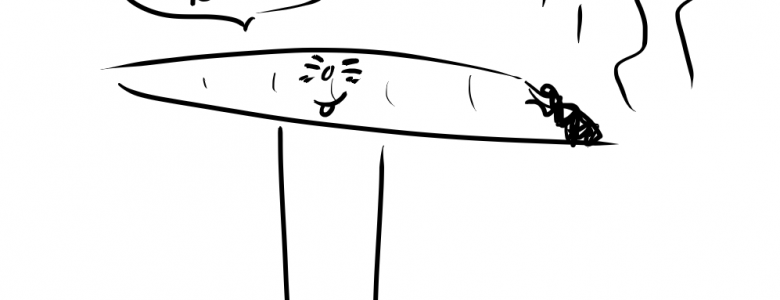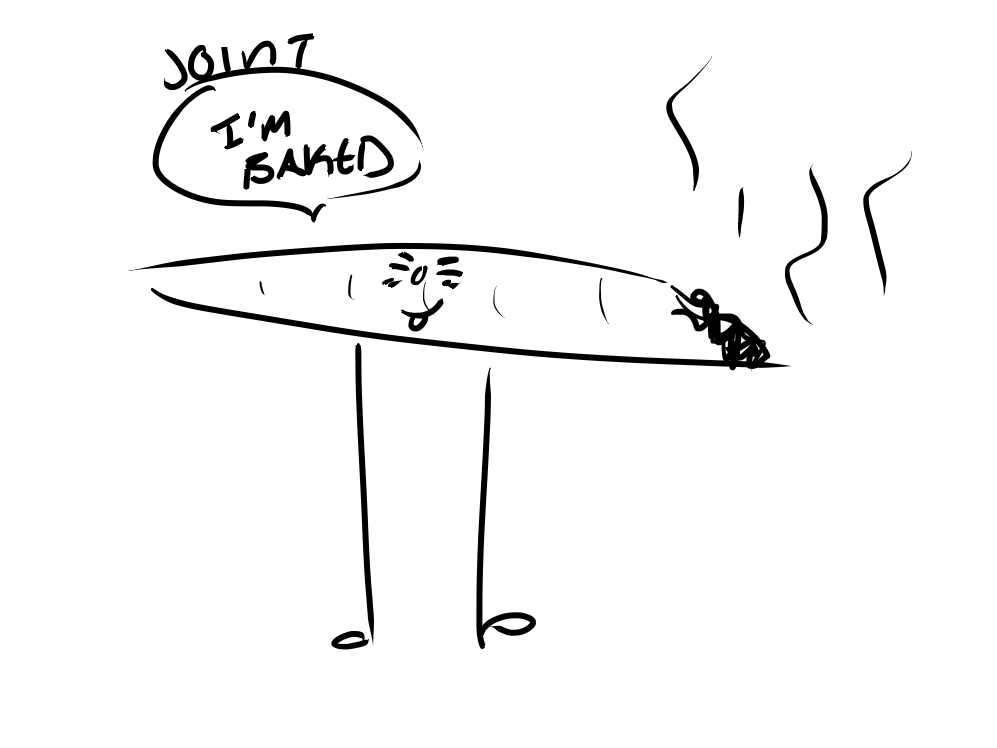April 20, 2019
The History of Cannabis Use

By: burgundy bug
“I’m baked”
Source: The Burgundy Zine
Cannabis, marijuana, flower, pot, gonja, green, grass, herb – however you prefer to refer to reefer – is a mild hallucinogenic drug that has been cultivated and used as far back as 500 BC, according to Narconon.
Read: How to Celebrate 4/20 in Philly 2019
Source: The Burgundy Zine
Early Cannabis Use and Cultivation
Ancient Cannabis
In a land before digital clocks, the ancient Chinese, Egyptian, and Greek civilizations used cannabis as a medicinal remedy to reduce inflammation.
These ancient civilizations also used hemp for fiber, rope, clothing, and paper, among other resources.
The use of cannabis is prominent throughout ancient Chinese literature in poems and philosophical works, a study published by Frontiers in Pharmacology reports.
Today, China’s ecosystem remains home to some of the most diverse species of hemp and cannabis.
Although it remains unclear as to whether cannabis was used for its psychoactive properties in ancient Egypt, controversial research uncovered cannabinoids within the tissues of several Egyptian mummies, according to Cannabis: Evolution and Ethnobotany.
Archaeologists unearthed in-tact Cannabis plants in tombs at the Jiayi cemetery of Turpan, NW China in 2016, as published in Economic Botany.
Cannabis was also abundant across farms and wilderness in ancient Greece, according to Cannabis in the Ancient Greek and Roman World.
The ancient Greeks touched upon their use of cannabis in their literature, as well, in regards to botany, pharmacology, medicine, dream interpretation, and stage plays.
18th Century Cannabis
Contrary to popular belief, the Declaration of Independence was written on parchment, not hemp paper, the National Constitution Center reports.
However, our founding fathers did cultivate hemp plants during the 18th century.
Read: Essay: “Cannabis: a Civil Right and Economic Miracle”
Source: The Burgundy Zine
It’s also unclear as to whether or not they actually smoked hemp – and if they did, it’s unlikely they experienced any “high” from it. The hemp they harvested contained very low traces of THC.
Instead, the plant was used to manufacture rope, canvas, cloth, and paper (perhaps a draft of the Declaration of Independence had been written on hemp paper).
19th Century Cannabis
Sir William Brooke O’Shaughnessy, an Irish physician in the mid-1800s, studied the effects of cannabis extract on animals, children, and patients after arriving in India in 1833, according to W. B. O’Shaughnessy and the Introduction of Cannabis to Modern Western Medicine.
In his first experiment with cannabis extracts, O’Shaughnessy administered ten grains of “Nipalese [sic] Churrus, dissolved in spirit” to a mid-sized dog.
“In about half an hour he became stupid and sleepy, dozing at intervals, starting up, wagging his tail as if extremely contented, he ate some food greedily,” O’Shaughnessy wrote in his notes. “On being called to he staggered to and fro, and his face assumed a look of utter and helpless drunkenness.”
O’Shaughnessy proceeded to experiment with cannabis as a treatment for a variety of ailments, such as rheumatism, hydrophobia, cholera, and tetanus.
After administering “half a grain of hemp resin in a little spirit,” one patient with rheumatism became lively, talkative, and even began to sing before getting a full night of peaceful sleep.
Two rheumatism patients entered a temporary state of “catalepsy” after receiving a dose of cannabis extract. Nonetheless, their condition was cured within three days of treatment.
By the time the late 1800s rolled around, cannabis was sold openly in pharmacies throughout the United States, according to PBS. It was also frequently used as an ingredient in a variety of medicinal products.
20th Century Cannabis
The Pure Food and Drug Act of 1906 required over-the-counter remedies to label whether they contained “cannabis indica” or not.
As the use of cannabis grew in popularity, states began passing their own laws prohibiting it, beginning with California in 1913, according to research published in Race, Gender & Class.
Although bans began cropping up left and right throughout the United States, that didn’t stop the spread of cannabis throughout New Orleans, parts of New York, and the southwest, Narconon reports.
Musicians like Cab Calloway and Benny Goodman sang about cannabis throughout the early 1930s.
The Reefer Man by Cab Calloway
Source: Cab Calloway – The Reefer Man (Original) | cjlujan1995
The Federal Bureau of Narcotics (FBN) was founded in 1930 to enforce the Harrison Narcotics Act of 1914, according to the Drug Enforcement Administration (DEA) Museum.
Originally, the Harrison Narcotics Act was legislated to regulate and tax the import, manufacturing, and sales of coca leaves and opium.
As the use of “marihuana” (commonly referred to as a “killer drug” throughout the Great Depression era) increased among the American population, 48 states enacted laws pertaining to cannabis cultivation, according to the DEA.
The Marihuana Tax Act of 1937 was based upon the Harrison Narcotics Act, penalizing the use of cannabis unless proper taxes were paid.
The Boggs Act was signed into legislation in 1951, which treated cannabis with the same penalties as heroin.
First time offenders faced two to five years in prison and a $2,000 fine. Second time offenders faced five to 10 years in prison, and third time offenders faced 10 to 15 years.
These sentences were then increased by the Boggs-Daniel Narcotics Control Act of 1956.
In spite of the FBN cracking down on cannabis, “hippies” proceeded to spark up around the country in the following decades.
Although Gallup Polls found that only 4% of adults had tried cannabis in 1969, it’s reasonable to argue this percentage may be inaccurate. Some may have lied about their use in fear of being arrested and fined.
The number of adults surveyed who admitted to using cannabis climbed throughout the 1970s, with 24% saying they had tried it in 1977.
Congress began repealing the mandatory sentences imposed on cannabis use throughout this time period, as they realized it was unjust and did nothing to curtail American’s from taking a bite out of the devil’s lettuce, PBS reports.
Just a decade later, President Ronald Reagan signed the Anti-Drug Abuse Act, which carried new federal penalties for cannabis possession and dealing.
This act was later amended with a “three strikes and you’re out” policy, mandating a life-sentence for repeat offenders and even the death penalty, in some cases.
George H.W. Bush on drugs in 1989
Source: President Bush Speech on Drugs/Democratic Response on Drug Strategy by Senator Biden| US National Archives
Seven years after President George H.W. Bush televised his declaration of a new war on drugs, California passed the Compassionate Use Act of 1996, legalizing the use of medicinal marijuana within the state.
Cannabis Today
Colorado Amendment 64 legalized the recreational use of cannabis for those over the age of 21 in Nov 2012.
As of Mar 2019, Colorado has collected $968,998,534 in tax revenue from cannabis, the Colorado Department of Revenue reports.
Nine states have followed in the footsteps of Colorado, legalizing the recreational use of cannabis as of Apr 2019, according to the National Cannabis Industry Association (NCIA).
Additionally, medicinal marijuana is legal in 33 states and Washington D.C., ProCon reports.
The process of obtaining your medical marijuana card will vary from state to state.
If you are a resident of Pennsylvania who is interested in applying for a medicinal marijuana card, head on over to our post from last week for more information.
Interested in having content featured in an upcoming blog post or issue of The Burgundy Zine? Head on over to the submissions page!
For all other inquiries, please fulfill a contact form.


